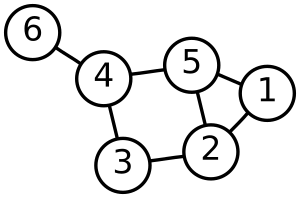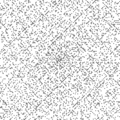Discrete mathematics facts for kids
Discrete mathematics is a branch of math that studies things which are "discrete." This means they are separate and distinct, like individual steps on a staircase. It's different from "continuous" math, which deals with things that change smoothly, like sliding down a ramp.
In discrete mathematics, you'll learn about things you can count. For example, it looks at integers (whole numbers like 1, 2, 3), graphs (like a network of dots and lines), and rules of logic. These items don't blend into each other; they have clear, separate values.
This field does not include topics like calculus or analysis, which are part of continuous mathematics. Think of it this way: discrete math is about counting individual items, while continuous math is about measuring things that flow or change without breaks.
Sometimes, when discrete mathematics focuses on sets of items that are limited in number, it's called finite mathematics. This part of math is often used in business.
Why Discrete Math is Important
Discrete mathematics became very important in the second half of the 1900s. This was mainly because digital computers were invented. Computers work by taking discrete steps and storing information in separate bits (like 0s and 1s).
Concepts from discrete mathematics are super useful in many areas of computer science. For example, they help us understand:
- How computer algorithms work (the step-by-step instructions computers follow).
- How programming languages are built.
- Cryptography (making and breaking secret codes).
- How computers can prove mathematical statements.
- How software development happens.
Also, computers help us use ideas from discrete mathematics to solve real-world problems. This includes things like planning the best routes for delivery trucks or scheduling tasks efficiently.
Images for kids
-
Complexity studies how long algorithms, like this sorting routine, take to finish.
-
Graph theory is closely connected to group theory. This truncated tetrahedron graph is linked to the alternating group A4.
-
The Ulam spiral shows numbers, with black pixels marking prime numbers. This diagram hints at patterns in how prime numbers are spread out.
See also
 In Spanish: Matemática discreta para niños
In Spanish: Matemática discreta para niños





